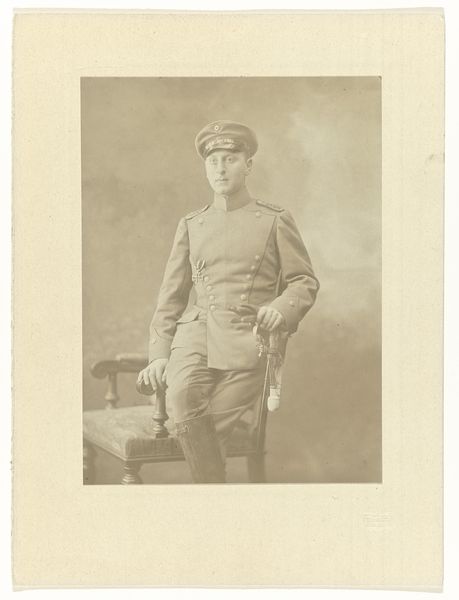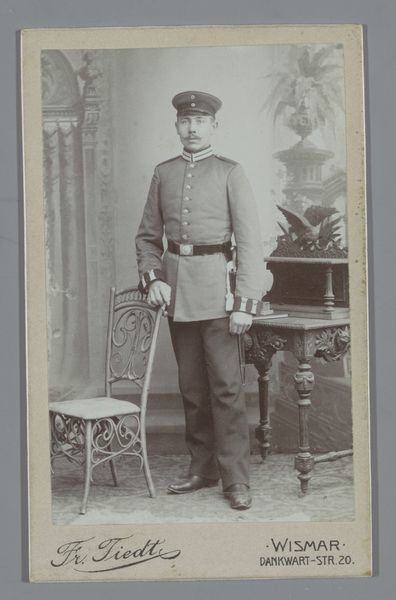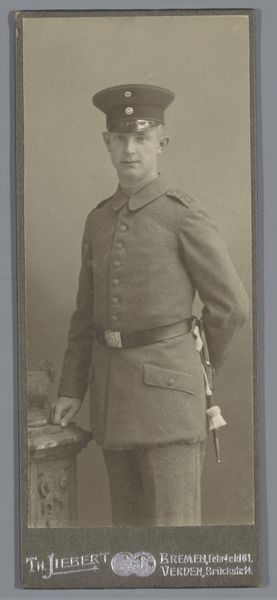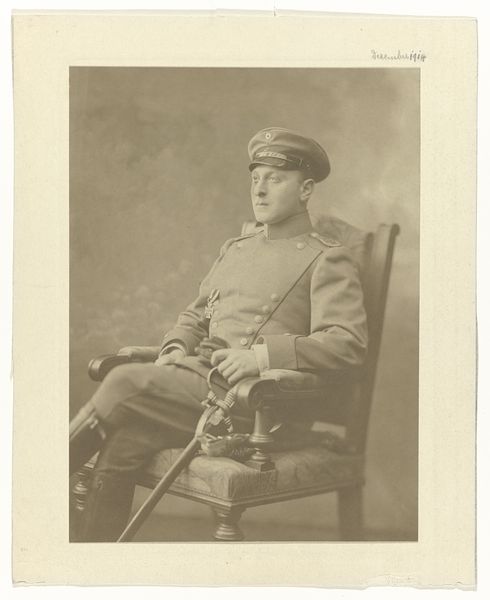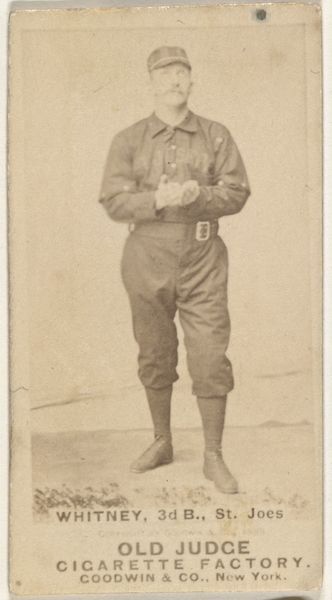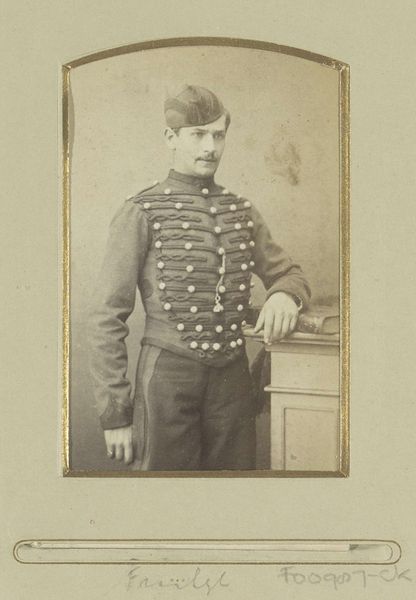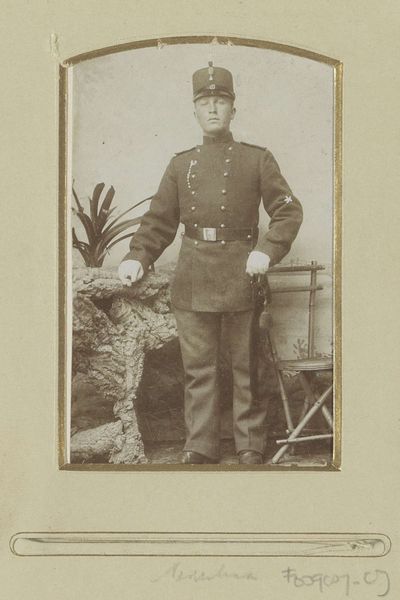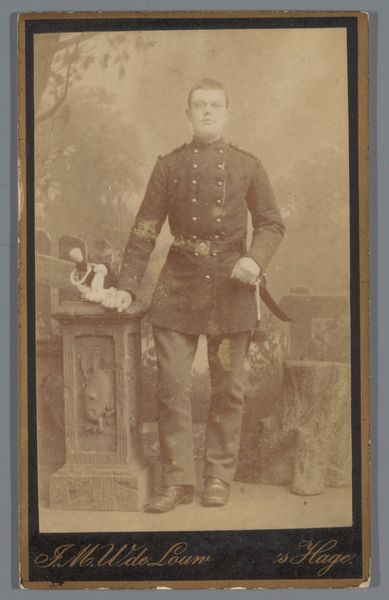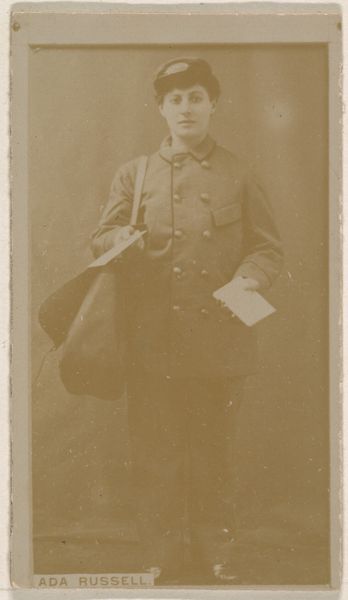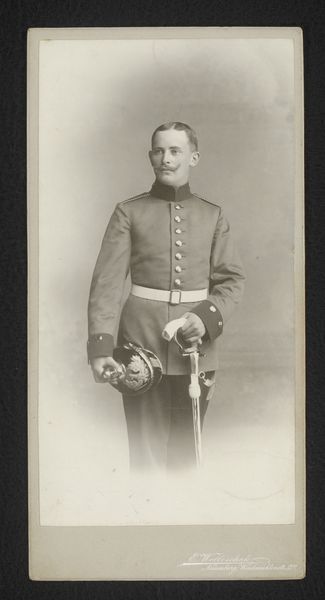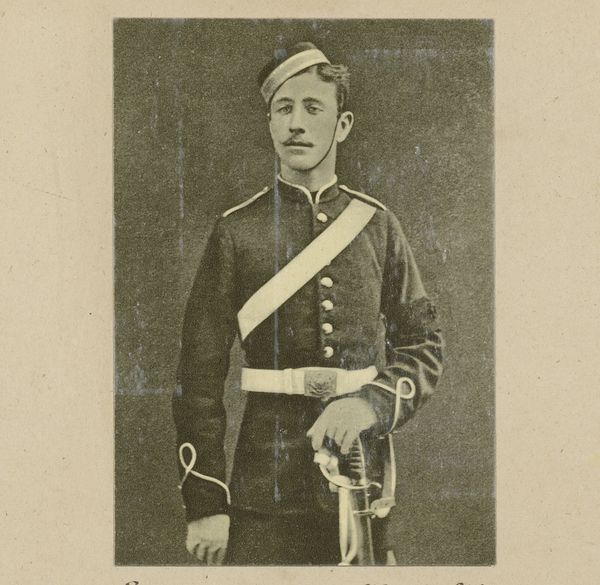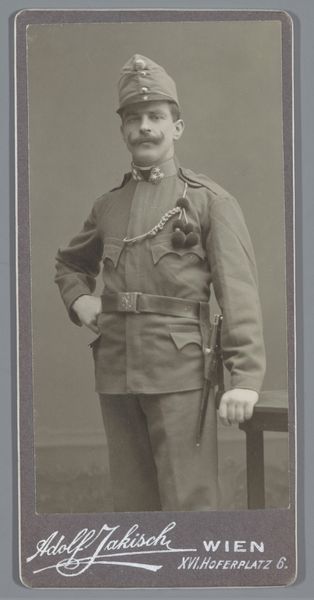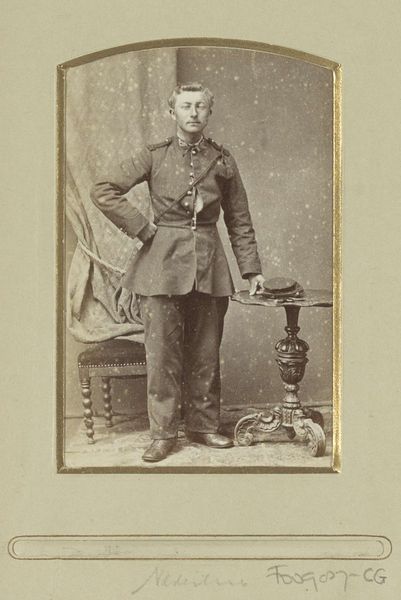
Arthur Moos met chapka en sabel in het uniform van het Duitse leger, met het IJzeren Kruis op de borst, gezeten op een stoelleuning, december 1914 1914
0:00
0:00
photography, gelatin-silver-print
#
portrait
#
german-expressionism
#
photography
#
historical photography
#
gelatin-silver-print
Dimensions: height 160 mm, width 220 mm
Copyright: Rijks Museum: Open Domain
Curator: This intriguing portrait, titled "Arthur Moos met chapka en sabel in het uniform van het Duitse leger, met het IJzeren Kruis op de borst, gezeten op een stoelleuning, december 1914," captured through the medium of a gelatin-silver print, dates back to the pivotal year of 1914. What strikes you most about it initially? Editor: The stark tonal range immediately catches my eye. The figure, seemingly caught between youth and war, possesses a rigid posture and severe mien. Curator: The historical context is critical. We see a subject who likely had been pushed by societal forces, at the beginning of World War One, into the image of a militarized patriot, yet his slight frame and gentle eyes betray a vulnerability that complicates any simple interpretation. He might even have been ambivalent, but social expectations would have expected him to pose heroically. Editor: Indeed, it is impossible not to notice the tension in the way he is posed. From a purely formal perspective, notice how his form is bisected by the hilt of his sword, dividing our reading into two registers, martial ambition, youthful reluctance. His eyes lead me toward German Expressionism by his unsettling stare. Curator: German Expressionism offers us another layer through which we see it. The early 20th century in Germany fostered diverse identities reacting to their social settings. This portrait adds nuances to understanding responses to wartime pressure by exploring inner conflict. Editor: And that uniform…It’s practically luminous against the backdrop, almost iconic. It could be read, semiotically, as both signifier of power and tragic vulnerability. Curator: His gesture—that casual yet firm grip on the sword—tells such a nuanced story. One wonders about his experience within the machinery of war, the ideals challenged, the self reconstructed under pressure of events, of wartime nationalism. It speaks about cultural influences within wartime photography and society at that moment. Editor: It does raise complex questions about identity. As a cultural artifact it embodies an aesthetic unease typical of German Expressionism, in capturing internal tension in the outer self and vice versa, blurring easy interpretations. Curator: Indeed, examining such visual history enhances understanding of cultural nuances during conflict; from national imagery construction to hidden humanity. Editor: Agreed, a potent mix—it serves as a window into a young man's story within war's complex tapestry.
Comments
No comments
Be the first to comment and join the conversation on the ultimate creative platform.
